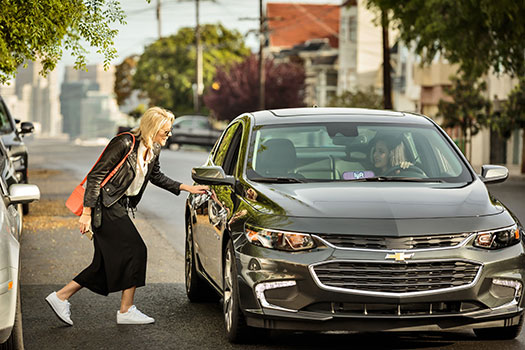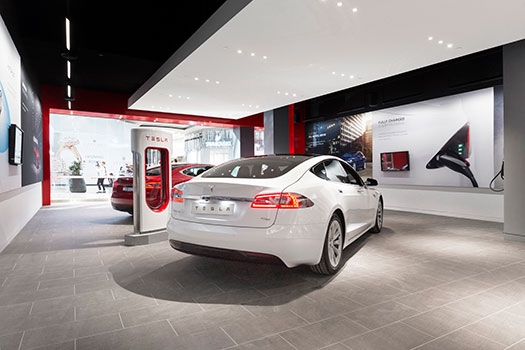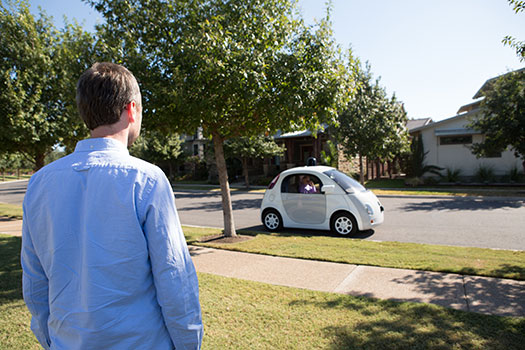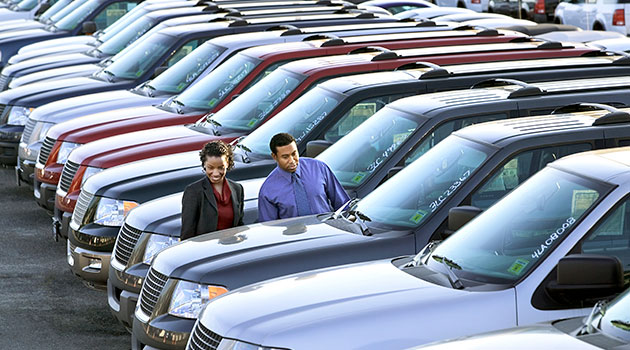The past few years have been good to car dealers.
Riding the momentous wave created by the perfect storm of higher employment rates, lower gas prices, and more miles traveled, the auto industry has turned out a string of record-breaking years for sales, with 2016 setting the most recent high-water mark, topping out at 17.55 million new vehicles sold.
But, as the old adage warns, nothing good can last.
Despite laying claim to yet another all-time high for the industry—the average sticker price soared to $35,870 this November, according to Kelley Blue Book—this year will likely be the first to see overall auto sales slip since the Great Recession’s trough in 2009, the latest batch of numbers indicate.
And some experts are predicting that the setback is much more than a speed bump.
As the popularity of ridesharing continues to climb and self-driving cars keep gaining speed, the number of customers for car dealers to court will only continue to dwindle—and many owners have already seen the writing on the wall, choosing to let go of their long-held lots.
Can the concept of car dealerships survive the slew of substantial changes just beyond the horizon, or will the business model become just another aspect of the industry set to fall victim to sweeping future disruptions?
Strike One

Sharing may be caring, but the concept is also likely cutting into future revenue streams for the dealership industry.
Since its inception, the idea of ridesharing has exploded in popularity around the world. A third of the U.S. population had used a mobility app in the past year, according to a recent Dalia Research survey. (That number reached far higher in other corners of the globe, peaking at more than 50% in China.)
As an economic sector, “shared mobility” was also earmarked for rapid expansion by research group McKinsey & Company, which projected that the profits reaped from ridehailing apps and other businesses would increase 30% by the year 2030. That growth rate coincides with other forecasts heralding the rise of rideshare, including the prediction that a quarter of all miles driven in the United States will take place in a communal vehicle by 2030.
Some have even gone so far as to declare the arrival of peak car ownership, with the research firm Rocky Mountain Institute estimating that apex will have come and gone as soon as 2020.
(One silver lining, predicted by the McKinsey report, is that the wear and tear on more frequently used autonomous vehicles will increase how often the cars need to be replaced, but even this higher turnover rate will only temper the decline of demand, the report notes.)
While the anticipated knock in necessity will likely leave dealers with less profit, other disruptive forces at play are taking aim at the very structure of the industry, and could work to sap its once indelible power.
Strike Two

Automobiles requiring human drivers may not yet be antiquated, but the dealership model used to buy them is already facing pressure to adapt.
Across the country, the classic dealership method has encountered challenges from new-age ideas, most notably pushed by Silicon Valley powerhouse Tesla, whose CEO, Elon Musk, has seemingly made a personal crusade out of breaking the business model.
The electric car maker has taken up legal fights nationwide challenging the requirement found in all 50 states that car sales be handled exclusively through dealerships. Instead, Tesla has argued that automakers should be able to sell their own products directly through corporate storefronts.
So far, the fight has been piecemeal—and largely unsuccessful—for the California-based company, but Tesla has seen some success in states like New Jersey and Indiana, and convinced lawmakers in a handful of other states to at least reassess long-held dealership laws.
And while the dealership industry remains strong for now, and wholly united against such outside threats, a shifting power dynamic may soon cull its numbers, making the businesses more susceptible to outside pressure exerted by Tesla and other would-be disruptors.
Auto dealer consulting company Kerrigan Advisors has noted the first rumblings of a wide scale consolidation of the dealership industry, with 200 dealerships exchanging hands in 2017 – the busiest year on record for such transactions. Influential Morgan Stanley auto analyst Adam Jonas has also forecasted the collapse of the sector, predicting that just 10 mega-dealers will emerge from the current sea of over 8,000 auto business owners.
But these trends are nothing new. Numbers dating back to 2011 show a slow cannibalization of the industry, with large dealership groups getting larger and the weaklings of the herd getting winnowed out.
A twin rise of conglomerates has taken place across the automotive and tech industries, and the newly formed car manufacturing behemoths may soon smell blood in the water, and use their amassed influence to get rid of the middle-man.
Indeed, some have already taken the first steps toward doing so.
Strike Three: You’re Out of Options

In the coming age of shared rides and self-driving vehicles, it may seem the days for car rental agencies like Avis are numbered. And it was surprising to some when, earlier this year, the company announced a partnership with cutting-edge Waymo, Google’s self-driving vehicle sector.
But what might look like an odd couple may really be a perfect match.
The move not only extends a financial lifeline to the struggling rental company, but gives the tech giant access to Avis’ 11,000 locations and on-demand rental app infrastructure, which could be easily adapted to facilitate hailing rides from Waymo’s autonomous cars.
And if individual auto ownership declines as expected, it could create even more incentive for manufacturers to pursue the fleet model.
Many experts have predicted a future world populated by self-driving robots in a constant state of dropping off and picking up passengers—and, as truly realized communal vehicles, it goes to follow that the cars will all belong to a small clutch of owners.
Several manufacturers have already openly made moves toward this model, including General Motors, which recently announced an anticipated launch of small autonomous fleets around the country in 2019.
With the line between production and distribution in the future of transportation rapidly shrinking, it seems dealerships may soon find themselves squeezed out of the picture.
